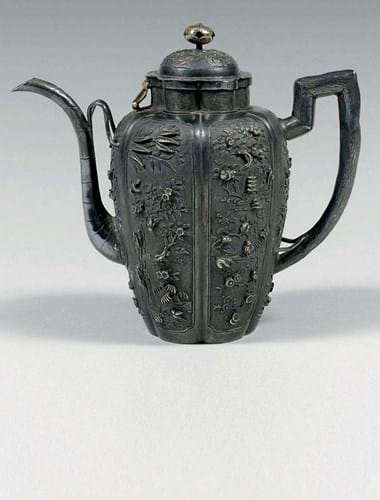
The rare 17th Chinese engraved and part-gilded ewer is one of 80 pieces of gold and silver presented to the Sun King as part of the diplomatic mission held in 1686.
It was discovered by members of Beaussant Lefèvre while conducting an inventory. It bears the crowned arms of France and the three crowns to the base indicating that it was royal property. It also features inventory numbers showing its presence in the Garde Meuble inventories from 1697 and 1729.
Well-documented
The ewer appears in later inventories from 1775 and 91 in the Jewel room and, having survived successive smeltings of royal silver, was dispersed during the revolutionary sales of January 1797 subsequently becoming the property of the Terray de Morel Vinde family. It has been declared a national treasure.
The Siamese ambassadors took a large cache of gifts, including carpets, lacquerware, and 80 pieces of gold and silverware to Versailles in 1686 on behalf of King Narai of Siam who was represented by his foreign minister Kosa Pan.
This was the third Siamese diplomatic mission to Versailles during the 1680s following visits in 1681 and 1684. Louis had also in turn sent his own diplomatic missions to Siam for commercial purposes and to convert King Narai to Catholicism.
For both countries these missions were underpinned by commercial and political goals. Siam’s aim was to interest France in becoming a preferred trading partner. For Louis XIV the goal was to assert France’s influence and win commercial victory over Holland.
Ultimately the diplomatic missions were not successful as in 1688 King Narai was overthrown and replaced by Phetracha, who closed Siam to all westerners except the Dutch.














